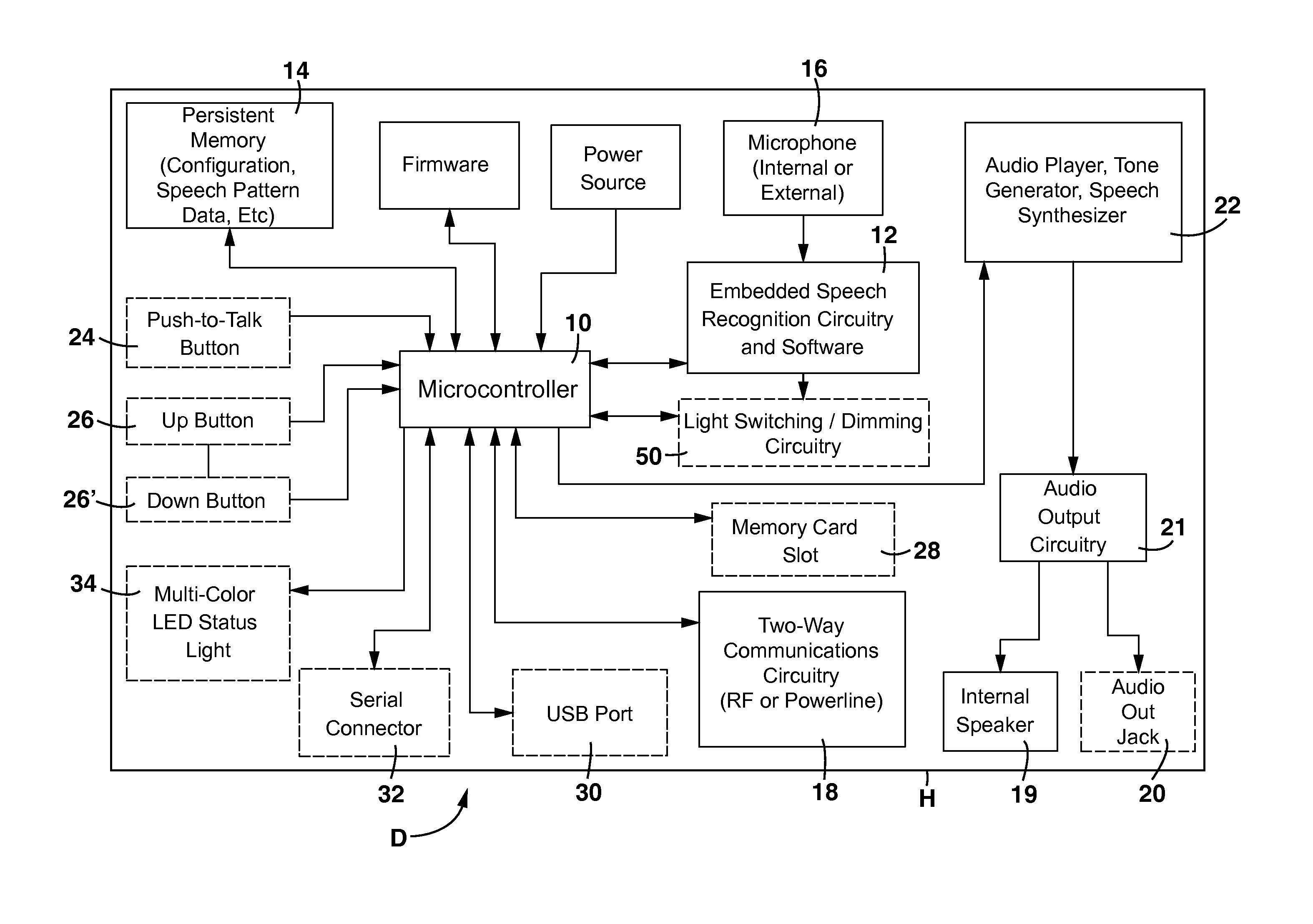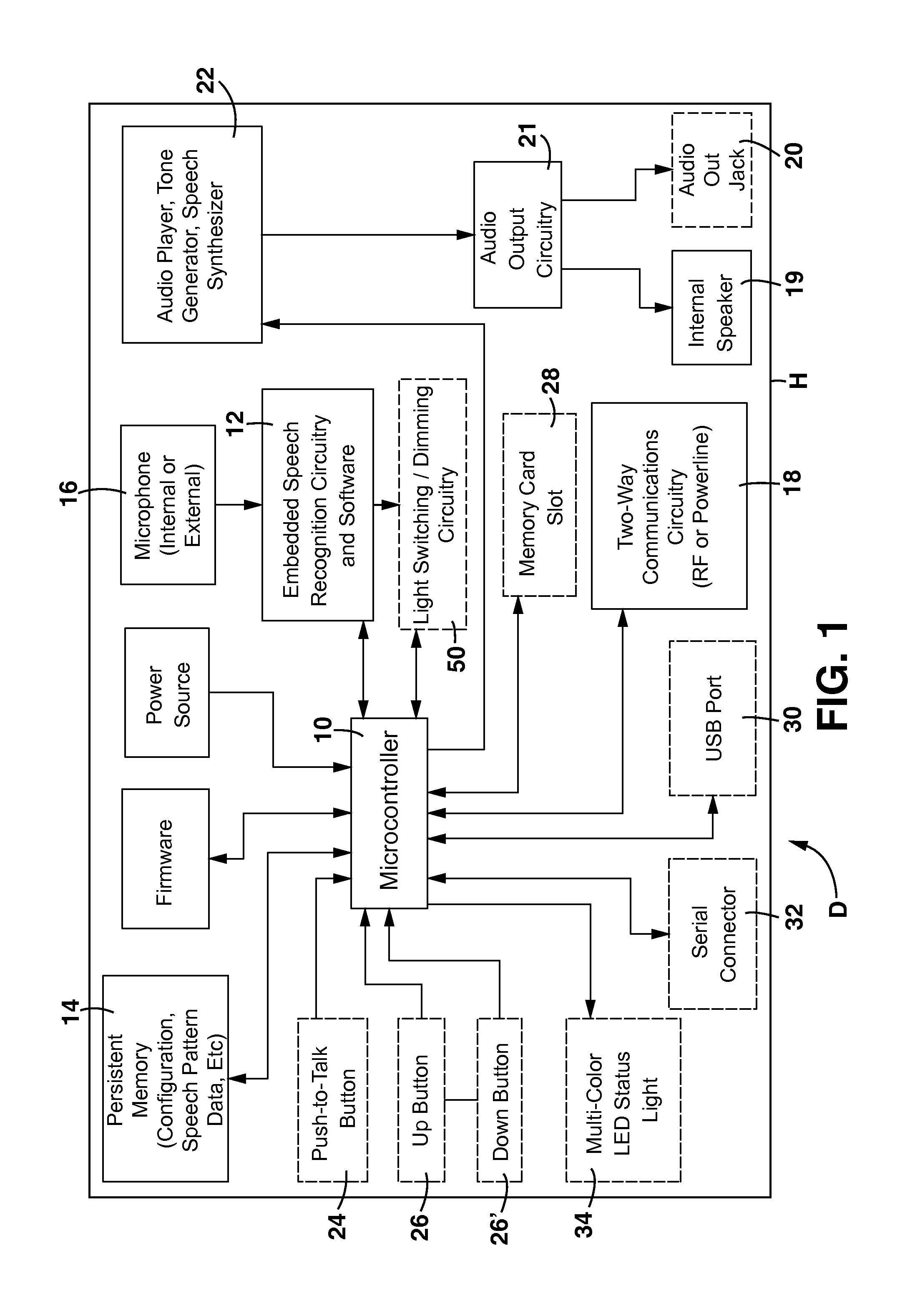Interactive speech recognition device and system for hands-free building control
a technology of hands-free building control and speech recognition device, which is applied in the field of automatic control system improvement, can solve the problems of reducing the utility of speech recognition system, affecting the design goal of the fundamental design goal, and the inability of single control device to reliably recognize speech commands or trigger phrases from all locations in the given room
- Summary
- Abstract
- Description
- Claims
- Application Information
AI Technical Summary
Benefits of technology
Problems solved by technology
Method used
Image
Examples
Embodiment Construction
[0031]In the prior art references noted above, the general concept of combining embedded speech-recognition technology with wireless (e.g., RF) transmission to provide hands-free building control is discussed in some detail, and the respective disclosures of these documents are incorporated herein by reference.
[0032]Disclosed hereinbelow is a relatively small, low-cost, self-contained, human interactive speech recognition control device (shown in FIG. 1) that combines embedded speech recognition technology with wireless (or power line) networking technology to provide reliable “hands-free” voice control throughout any home or commercial building having controllable automation systems, appliances, electronic equipment or machines (i.e. “automated mechanisms”). Such control device includes embedded speech recognition software and circuitry capable of quickly recognizing spoken speech commands from an expected vocabulary or “flexible grammar”. When used in a hands-free building control...
PUM
 Login to View More
Login to View More Abstract
Description
Claims
Application Information
 Login to View More
Login to View More - R&D
- Intellectual Property
- Life Sciences
- Materials
- Tech Scout
- Unparalleled Data Quality
- Higher Quality Content
- 60% Fewer Hallucinations
Browse by: Latest US Patents, China's latest patents, Technical Efficacy Thesaurus, Application Domain, Technology Topic, Popular Technical Reports.
© 2025 PatSnap. All rights reserved.Legal|Privacy policy|Modern Slavery Act Transparency Statement|Sitemap|About US| Contact US: help@patsnap.com



